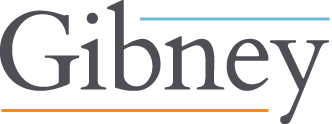The coronavirus pandemic presents unique challenges for foreign nationals in the U.S. who have status expiration dates approaching. Many of these individuals are unable to depart the U.S. due to travel restrictions and health concerns, while others may face obstacles to filing applications to extend status while in the U.S.
Thus far U.S. Citizenship and Immigration Services (USCIS) has declined to provide special relief. Its position is that there are measures under current law that are available for nonimmigrants who may not be able to timely file extensions or depart the U.S. due to COVID-19 or health-related issues. These existing measures are discretionary and generally still require physical filings with USCIS.
Apply for an Extension of Status
Eligible nonimmigrants whose status and work authorization will soon expire may file applications to extend or change status with a USCIS Service Center prior to the I-94 status expiration date. In certain circumstances, a timely filed extension of status application may also extend the work authorization of the applicant for a period of 240 days beyond the I-94 expiration date, while the application is pending. However, this benefit does not apply to all visa types. Please check with your designated Gibney representative for an individual case assessment, as there are serious consequences for working without authorization for both the employer and the employee.
Limited Online Filings Available
One of the obstacles that foreign nationals and their employers face in filing applications to extend or change nonimmigrant status is the need to file hard copy applications with USCIS. While USCIS has waived the requirement that individuals file applications with original (“wet”) signatures, unfortunately, USCIS only offers limited online/electronic filing options. The most common employment-based nonimmigrant visa petition used to secure work authorization, Form I-129, is not currently available for online filing or online payment of fees. As a result, in most instances, foreign nationals and their employers must still submit a physical filing to USCIS, entailing the need to produce and include filing fee checks and to arrange for the physical delivery of a petition to USCIS.
Flexibility for Late Application Filings
An individual who is unable to file an extension of status application prior to his/her I-94 expiration date may be eligible for discretionary relief in making a late filing. Under current regulations, if an applicant files an extension of stay or change of status request after the authorized period of admission expires, USCIS may, in its discretion, excuse the failure to file on time if it was due to extraordinary circumstances.
COVID-19 as Extraordinary Circumstance
USCIS has generally recognized COVID-19 as an “extraordinary circumstance” beyond the control of the foreign national. This means that in those cases where an individual was unable to depart the U.S. or file an extension of status prior to status expiration due directly to the pandemic, a request to retroactively grant status may be approved. Granting such requests is still within the sole discretion of the USCIS adjudicator. The length of delay in filing must be commensurate with the circumstances and the applicant must submit credible evidence to support the request, which USCIS will evaluate on a case-by-case basis. We caution against relying on this discretionary relief as there are severe consequences for remaining in the U.S. beyond an I-94 expiration date when an extension of status application was not timely filed. Please consult with your Gibney representative prior to making any late filing.
Visa Waiver Entrants – Satisfactory Departure
Individuals who have entered the U.S. for business or tourism pursuant to the visa waiver program (i.e., with ESTA approval) are prohibited from filing extensions of stay in the U.S. and must depart the U.S. when the authorized period of stay expires. However, in limited circumstances, the individual may request Satisfactory Departure if he/she is unable to depart the U.S. by the admission period expiration date. Satisfactory Departure provides a one-time, 30-day extension of status if an emergency prevents timely departure.
Generally USCIS has authority to consider and grant Satisfactory Departure requests. However, there are also regional ports where U.S. Customs and Border Protection (CBP) has stepped in to provide assistance for visa waiver travelers needing Satisfactory Departure. Participating ports have specific requirements and procedures, and not all ports will assist. If you are a visa waiver traveler and require Satisfactory Departure, please contact your designated Gibney representative prior to expiration of your current period of stay.
For policy updates, operational changes, and other COVID-19 information, please visit uscis.gov/coronavirus or contact your Gibney team.

